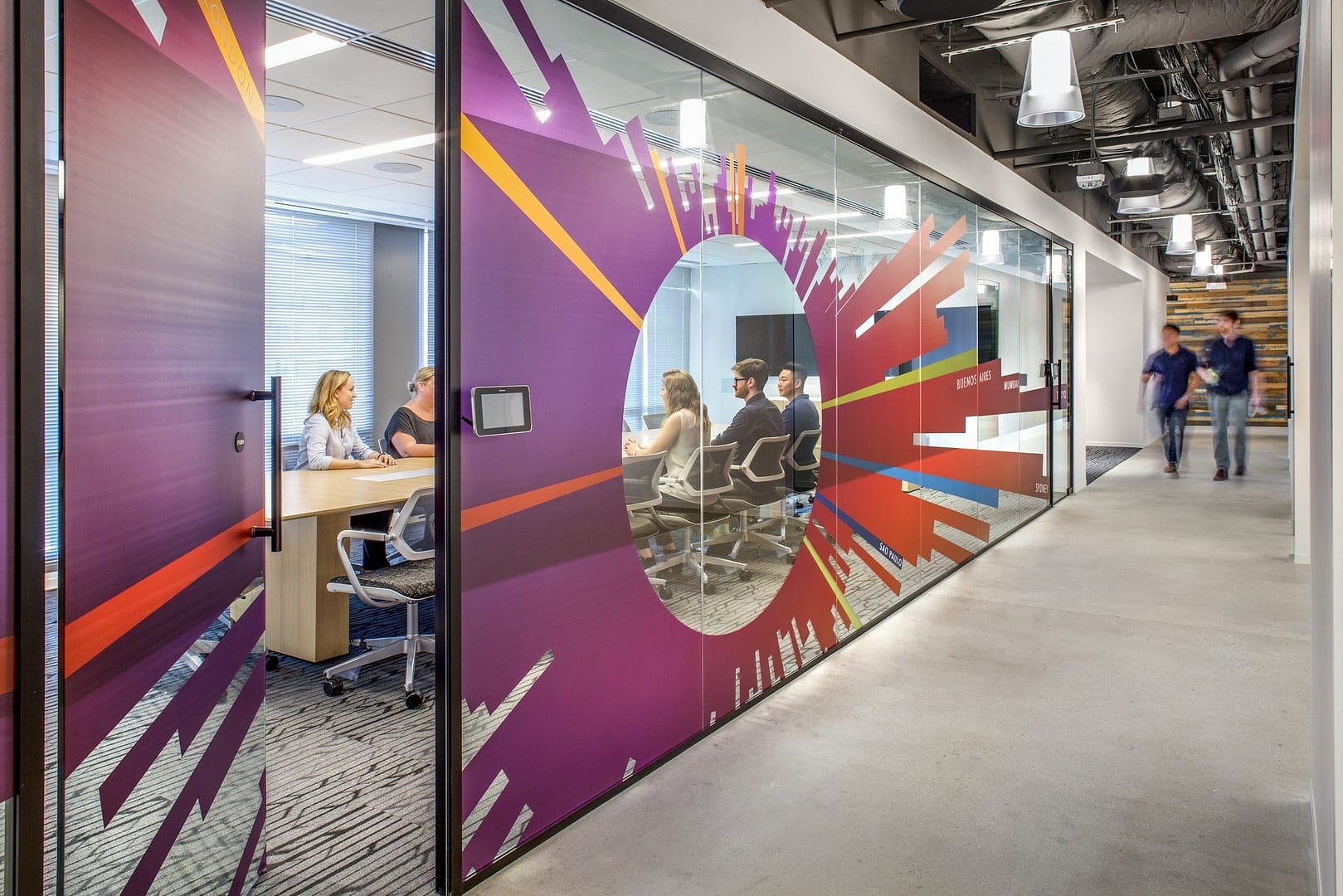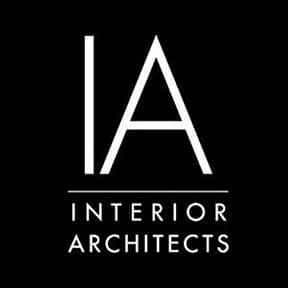
On Valentine's Day, two short weeks before Women's History Month, IA Managing Director Holly Briggs, FAIA, LEED AP BD+C, received the news that she would be inducted into the AIA College of Fellows this coming May. Holly is known for blazing trails and was an early adopter of sustainable practices in corporate interiors, so this wasn’t a total surprise to many who know her. An honor that only 3 percent of AIA members ever achieve, this accomplishment has been celebrated both inside and outside the firm. "With this impressive achievement, Holly raises the bar for all of us at IA," reflects IA Co-CEO and President Tom Powers.
As a part of IA’s celebration of her accomplishment, which coincides with our focus on women's history month, we sat down with Holly and asked her what entry into the fellowship means to her and what we can expect in the future.
[IA] We recently learned that you’re to be appointed to the 2020 class of AIA’s prestigious College of Fellows - Congratulations!
[HB] Thank you! It’s such an honor!
[IA] Can you tell us a little bit about what this honor means?
[HB] I think the primary significance is that it’s the highest membership honor in the AIA and a recognition of a significant contribution to the practice. Only 3 percent of the membership ultimately become a fellow. It exposes you to a new network, though. There are several events in a given year that are only for fellows, so a big part of it is having access now to this new group of peers who are doing incredible things in the industry.
[IA] We’ve been told that the application process is quite arduous—can you share any insights into what that looks like?
[HB] One of the greatest honors is being recognized by a peer of being worthy of consideration. That aspect of the process made this even more meaningful of an acknowledgement of the contributions I’ve made to our industry. It all becomes rather prescriptive at that stage. You submit in March, and then they tell you in April if you’ve been admitted to the applying class for the next submission. Then, from April through October (when it is due) you have to meet once a month with your deliverables and speak to them, a group of about 30 fellows—you can equate it to writing a thesis, almost. It’s a bit of a grueling process in that regard. You have to come up with a premise, and everything around it needs to support that. The case studies you include, the speaking engagements, the articles you were involved in, etc. These are things that span your whole career and knitting that together into the story was the most difficult part of the process.
[IA] What was that premise?
[HB] Ultimately I realized that a lot of the work I conducted took a systematic approach to designing spaces that were custom. I’ve been lucky to have the chance to work with clients who saw the value in using pilot spaces to test and customize planning and infrastructure concepts. Sustainability was also a recurring theme in that narrative. I’ve had the good fortune to be involved in projects where finding new ways to meet or exceed sustainability standards was prioritized. Oftentimes this entailed utilizing new technologies, strategies, and materials to accomplish those goals, and even directly impacting policy.
[IA] Are there any moments, projects or themes from your career that you feel may have especially contributed to your upcoming induction?
[HB] Honestly, I think I found myself in the right place at the right time on a number of occasions throughout my career that really contributed to my growth and advancement. I was fortunate to have worked on some really significant projects that impacted national standards in a significant way. Many of those were related to LEED, and I think my work with some early government headquarters projects helped. The US Department of Transportation Headquarters was a great opportunity I was able to take advantage of. That was a project that really changed how the Federal Government approached designing the federal workplace. Prior to that, they were all in these little enclosed suites and private offices, and this was the first move that would put them in a new, agile environment that would support their work processes and collaboration.
I also led the Capital’s first LEED Platinum CI project—I was lucky to have been a part of several projects that impacted our profession. Through our work and advocacy I think part of that was raising awareness of the workplace as one of today’s most intensely inhabited human environments—deserving the same attention to health and life quality as other habitats.
Being in the right place at the right time gave me the opportunity to put into practice my design ideologies at an important inflection point in the sustainability movement.

Confidential Client, Arlington, VA. Photography © Thomas McConnell.
[IA] What does this accomplishment mean to you personally?
[HB] Personally, I think it’s obviously the perfect cap on a career. It’s the jewel at the end. The thing that means the most I’d say is bringing recognition to the practice of interior architecture—it has not always been as recognized and respected as other aspects in the profession.
[IA] It’s our understanding that there are relatively few interior architects who have been inducted into the AIA College of Fellows-
[HB] -I couldn’t find anyone who had a similar approach or portfolio. Certainly, there were individuals who focused on hospitality design or residential interiors and some folks who were in for a significant programming piece, but very few people were related to interior architecture.
[IA] And as a female architect, can you provide us with some context behind what this means to you?
[HB] As a part of this whole process, I had the chance to look into some research from when I first entered the profession, and when I graduated only around 3 percent of my graduating class was female. And at that time, only about 4 percent of the profession as a whole were women. There were only 250 women that were members of the AIA.
I know that some of the research I’ve seen recently has the number of women in school for architecture or related fields at about 50 percent, but unfortunately, due to some barriers to entry and work-life balance issues, it doesn’t really translate to women in more leadership or senior roles in architecture and design firms. I think a little under 20 percent of licensed practitioners are women. I'm fortunate to be a part of a firm that recognizes the value women bring to leadership roles. A firm where approximately 60 percent of our leadership is female.
[IA] Were there any women who you found to be particularly inspirational as you developed in your career?
[HB] That’s easy. At the time I was in school (or maybe coming out of it) there was obviously Zaha Hadid, who was the first woman to win the Pritzker Prize, and she was such a prominent force in architecture. She really was a trailblazer for women. At around the time I was coming out of school, Denise Scot Brown was practicing architecture, and I really looked to her as a role model as there weren’t a lot of women in the field. Another person I really admired and followed throughout my career was a woman here in Washington, DC. Her name was Chloethiel Woodard Smith, and she was the sixth woman ever to be elevated to a fellowship in the AIA. At the time when she was practicing, she led the largest woman-owned practice in the country. With her firm headquartered in Washington, DC she was responsible for some prominent architecture in Washington like the Blake Building, Washington Square, the Pension Building, etc.
[IA] The induction ceremony takes place on May 15th, when you’ll be presented with a medal befitting this honor. What are your plans for the medal? Is there a special case or hook on a wall somewhere that has this medal’s name on it?
[HB] Well, I do have one friend who wore theirs to the office for two weeks after the ceremony! [Laughing] I probably won’t be doing that, but probably will have some sort of case on my desk at home, if I have to guess.
[IA] Acknowledging that you have yet to be inducted, what are some missions that you’d like to see future inductees have as they develop their careers?
[HB] One of the things that have been really difficult in our industry (and specifically for women to stay in our industry) is the aspect of work-life balance in architecture. For people who’ve been in it a long time, like myself, we tend to accept it as just the way it is, I think it’s an issue that is increasingly a concern in the industry. It’s been identified as a barrier to entry in the field, as well as a reason that many talented individuals leave the field. The more we can address this barrier and the more paths forward we provide that can raise the profile of women in the profession, the better.
[IA] Is there any other career advice you care to share with young professionals who may wish to follow in your footsteps in the future?
[HB] I think the primary thing is that this profession has many challenges, but they are outweighed by the rewards. My advice to any young woman who is interested is to follow your passion.
I’ve wanted to be an architect since the fourth grade; I loved drawing, drawing houses, etc. And in fourth grade when career day finally came there was a policeman and a nurse, of course, but there was also an architect. And I knew that day this is it. This is absolutely it. Fast forward a few years to 11th grade when you’re starting to talk to your guidance counselors and my guidance counselor told me “You can’t be an architect—boys only are architects.” Naturally, it came up in conversation with my mother, and she proceeded to march into that school and inform them that I could be whatever I wanted to be—and so off I went!
I think that no matter what anyone tells you (that “it’s going to be hard” or that “you can’t do it” etc.), if you have a passion for something follow it.
[IA] So, the real MVP right now is…-
[HB]
is my Mom. [laughing] Yes—this medal will be dedicated to her, for sure.
[IA] Thank you so much for sparing some time Holly—and congratulations on your recent honor. We at IA are proud of your accomplishments.
IA is a global firm of architects, designers, strategists, and specialists. We focus exclusively on environments through the lens of interior architecture—a radical idea in 1984, when IA was founded. We are highly connected agents of change, committed to creativity, innovation, growth, and community.
IA is a global firm of architects, designers, strategists, and specialists. We focus exclusively on environments through the lens of interior architecture—a radical idea in 1984, when IA was founded. We are highly connected agents of change, committed to creativity, innovation, growth, and community.

